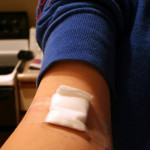General anesthesia was first applied to a human by a dentist, was Horace Wells (1), who discovered the anesthetic effect of “laughing gas” and used it for the first time to produce anesthesia in which a person underwent a tooth extraction. The discovery conducted by Wells, is considered one of the most important contributions that dentistry has offered humanity.
Much anesthetic practice has changed since the days of “Wells” to this day, developed anesthesiology as a true science that offers its progress to humanity, to enable the practice of surgical and other procedures without general anesthesia would be impossible to take out.
The practice of dentistry – dental practice understood by exercising all its specialties such as maxillofacial surgery, pediatric dentistry, etc.. – Many times must use general anesthesia or sedation in order to perform their procedures, either for reasons of procedure itself, or for reasons inherent to the patient.

By: Sarah Fleming
Any Chicago sedation dentist who want to make some type of intervention under general anesthesia should have appropriate information on the pre-anesthetic technique, drugs and procedures that will be applied to the patient by the anesthesiologist, thus the procedure can be fully integrated and perform a dental treatment with the speed and precision required by this condition under which the patient is located. In the experience of other Latin American countries such as Argentina and Mexico, establishing the need to provide the dentist with information related to general anesthesia, which allows the basic knowledge of their problems. It also establishes the need to train dentists to practice their procedures in a patient undergoing general anesthesia or sedation. So that is imposed to guide the dentist in one aspect information regarding general anesthesia and a training aspect, with regard to how to act in front of the anesthetized patient.
Below is a brief summary of the concepts, techniques and procedures related to the use of general anesthesia and sedation in dental patients.